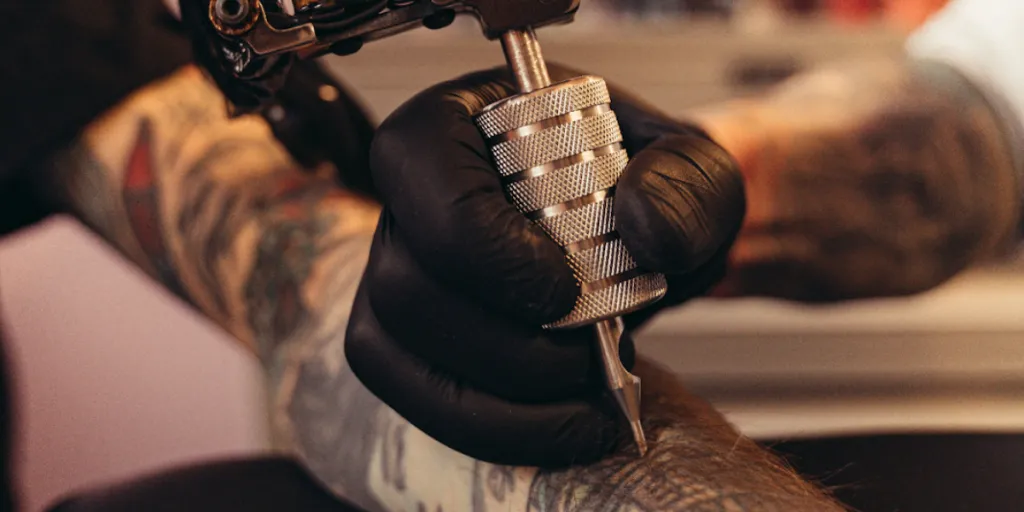Tattoos have evolved from being heavily stigmatized to being widely accepted in recent years. According to surveys, 32% of the US population has a tattoo, with 22% having more than one. With its popularity still rising and people becoming more likely to get one, tattoo artists are also popping up to meet the demand.
But creating amazing tattoos requires using proper equipment, and one piece of equipment consumers can’t cut corners on is tattoo guns. Whether it’s a new tattoo artist needing a new tattoo gun or a more seasoned one looking for an upgrade (or replacement), this article will explore everything businesses need to consider when catering to this market in 2024.
Table of Contents
What’s the market size for tattoo guns in 2024?
Types of tattoo guns
What to consider when choosing tattoo guns
In conclusion
What’s the market size for tattoo guns in 2024?
According to reports, the global tattoo gun market will grow at a 5.5% compound annual growth rate (CAGR) from 2022 to 2030. Experts attribute the market’s growth to the rising demand for tattoos, technological advancements in tattoo machines, and increasing disposable income.
Commercial use emerged as the largest contributor (based on application insights), due to the boosted demand for tattoos from clients across different age groups. North America is also the dominant region in the global tattoo gun market.
The region is leading the charge due to the rising number of people getting tattoos, high disposable income, and increasing popularity of various tattoo styles. Likewise, the European tattoo gun market will experience significant growth over the forecast period.
Types of tattoo guns
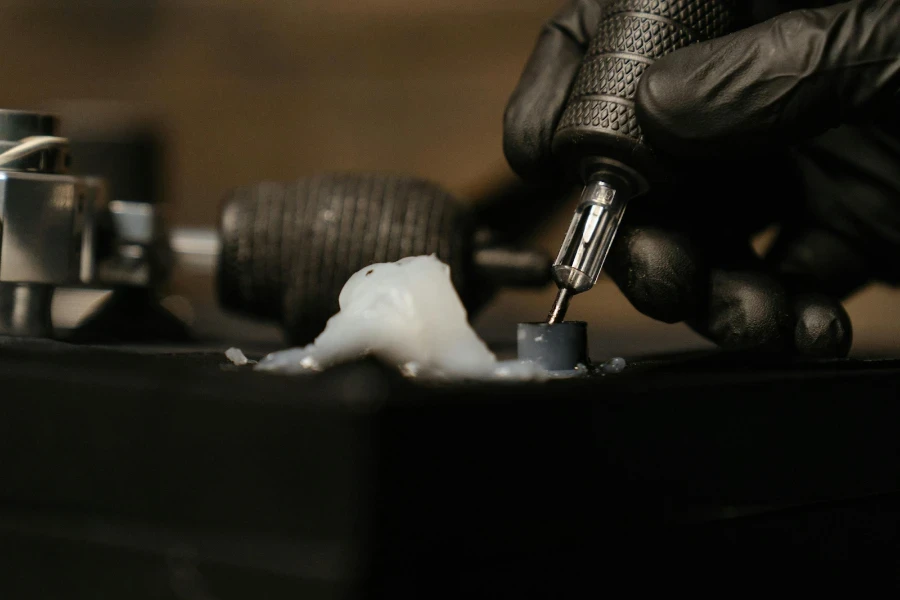
Here’s some interesting history about tattoo guns. The earliest tattoo guns came from Thomas Edison’s electric pen, created for something entirely different. But Sam O’Reilly took that idea in 1851 and patented the first ink-and-tube system rotary tattoo machine.
Thankfully, tattoo guns have enjoyed immense technological advancements since the 1800s, allowing the following types to enter the market:
Coil tattoo guns
These tattoo guns were once the industry standard, with many tattoo artists tagging them as the “best tattoo machine.” Coil tattoo guns were highly favored due to their user-friendly electromagnetic design, relatively low cost, and easily interchangeable parts.
Coil tattoo guns can also handle different tattoo needles for shading or lining. Most variants even allow artists to fine-tune their tattoo guns and adjust hit and stroke with simple tools.
Today, coil tattoo guns remain attractive to artists who love the ability to tinker and maintain their machines and those who appreciate bold lines. So, if target consumers want to customize every aspect of their machines, from the springs to the armature bar and everything in between, they can’t go wrong with coil tattoo guns.
Rotary tattoo guns
Rotary tattoo guns didn’t always have a great reputation. Previously, they were restricted to handling only smaller tattoo needle groups. However, recent developments have kicked such restrictions to the curb.
Now, most manufacturers offer pen-style rotary machines with more ergonomics, lighter weight, and the ability to handle bold linework. While these guns are not as customizable as their coil counterparts, some recent models allow users to adjust the hit and stroke.
Wireless tattoo guns
Battery technologies have become so advanced that wireless tattoo guns are viable and popular for artists. Although wired variants are great, they have issues (especially limited wire length).
Wires can easily get in the way of tattooing, becoming an obstacle and creating a frustrating experience for the tattoo artist. Wireless tattoo guns offer a more liberating experience without any wires in the way.
Wireless tattoo guns have the same features as traditional wired ones and can last hours (long enough for extended tattoo sessions).
What to consider when choosing tattoo guns
Stroke
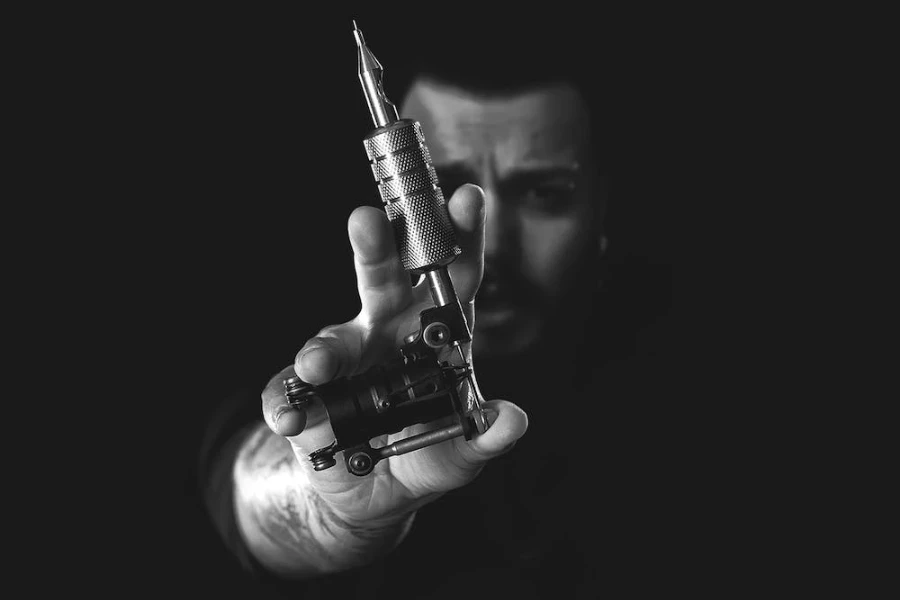
Stroke is a very important aspect to consider when choosing tattoo guns. It controls how hard the machine hits, how fast the needle moves, and the maximum depth.
While most machines come with various stroke sizes, others may offer the ability to adjust the stroke’s size range. Generally, machines can either have short, medium, or long strokes.
| Stroke size | Description | Used for | Pros | Cons |
| Longer stroke machines (4.0 mm+) | Long-stroke tattoo guns hit the hardest because they have more momentum. | Lining | The tattoo guns pack huge amounts of ink into the skin quickly. | Causes more physical trauma. It will chew up the skin easily. |
| Medium stroke (3.5 mm) | The most widely used stroke. Machines without adjustable features will come with a medium stroke length or something close. | Lining and shading | Medium-stroke machines are the most ideal for beginners. They’re incredibly multifunctional. | Medium strokes may hit too hard for multiple passes. They can handle thick lines or black/gray tattoos. |
| Shorter stroke machines (1.8 to 3 mm) | These machines move the fastest because they have shorter travel distances. | Soft black/gray tattoos and color blending. | The perfect stroke size for multiple passes over the skin and building ink layers. Shorter strokes also cause the least trauma. | It may be too short to pick up enough ink. |
The tattoo style also determines the kind of stroke consumers need. More realistic (i.e., black and gray) tattoos require three-millimeter strokes, while those with big line work or colors must use four-millimeter variants.
Comfort
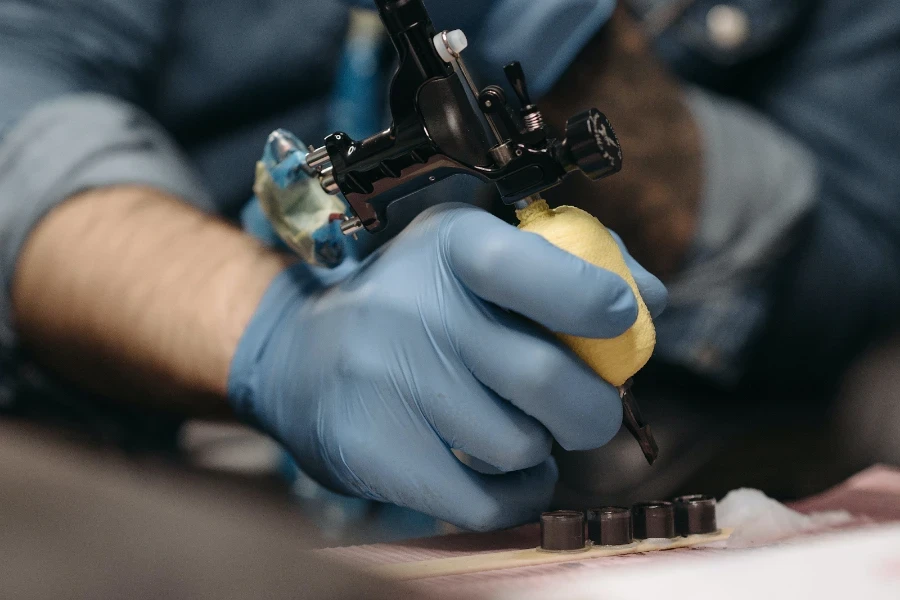
Comfort is another essential factor to consider when choosing tattoo guns. A comfortable machine means better tattoos and lower injury risks. Here are some things to watch out for when selecting comfortable tattoo guns to sell.
- Grip: Ensure the tattoo gun’s grip is comfortable while providing a secure hold. Target consumers can use alloy grips when segmenting their tattoo sessions into smaller hours. However, plastic is the most comfortable option for extended tattoo sessions.
- Trigger: For a more comfortable experience, tattoo gun triggers should be easy to pull and release. It should also be in easy-to-reach positions to avoid finger straining.
Material and weight
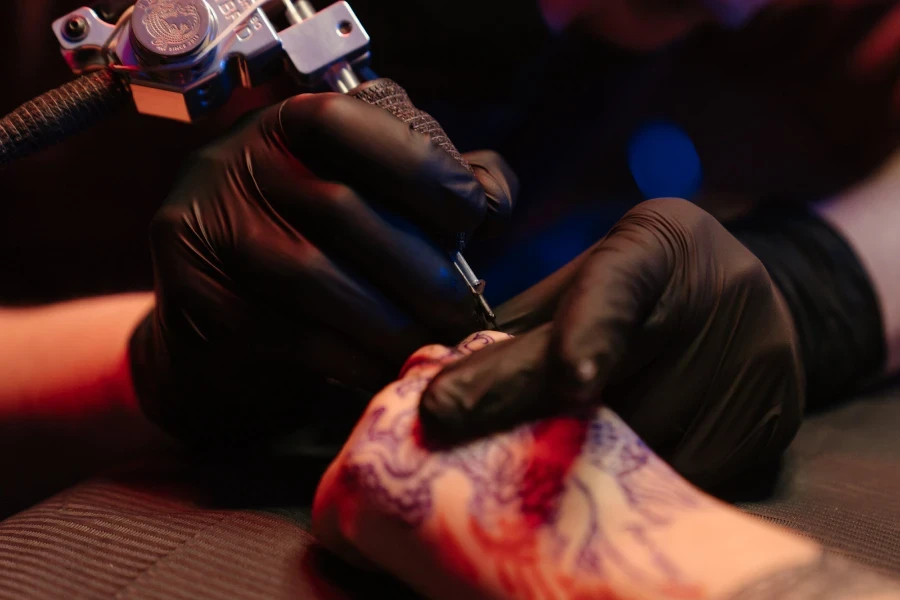
The last thing artists want is their tattoo guns breaking mid-session and damaging their clients’ skin. Hence, they’ll need reliable tattoo guns to ensure their tattooing goes smoothly—the best way to ensure durability is material quality.
The best tattoo guns are made from iron, steel, bronze, aluminum, or bronze. These materials provide sturdy, durable frames that can withstand constant use. However, aluminum tattoo guns are the lightest, while brass variants are the heaviest.
In conclusion
Getting the first tattoo machine is an exciting adventure. But things can quickly go south if tattoo artists don’t have the right supplies. So, to make their offers more enticing, businesses can offer tattoo guns with a few essential accessories like grips, needle cartridges, and tattoo needles.
Whether businesses want to offer tattoo guns in sets or standalone, remember to leverage the factors discussed in this article to choose the best machines for target consumers. Prioritize material/weight, comfort, stroke, and type to secure a higher chance of securing profits from the tattoo gun market in 2024.
